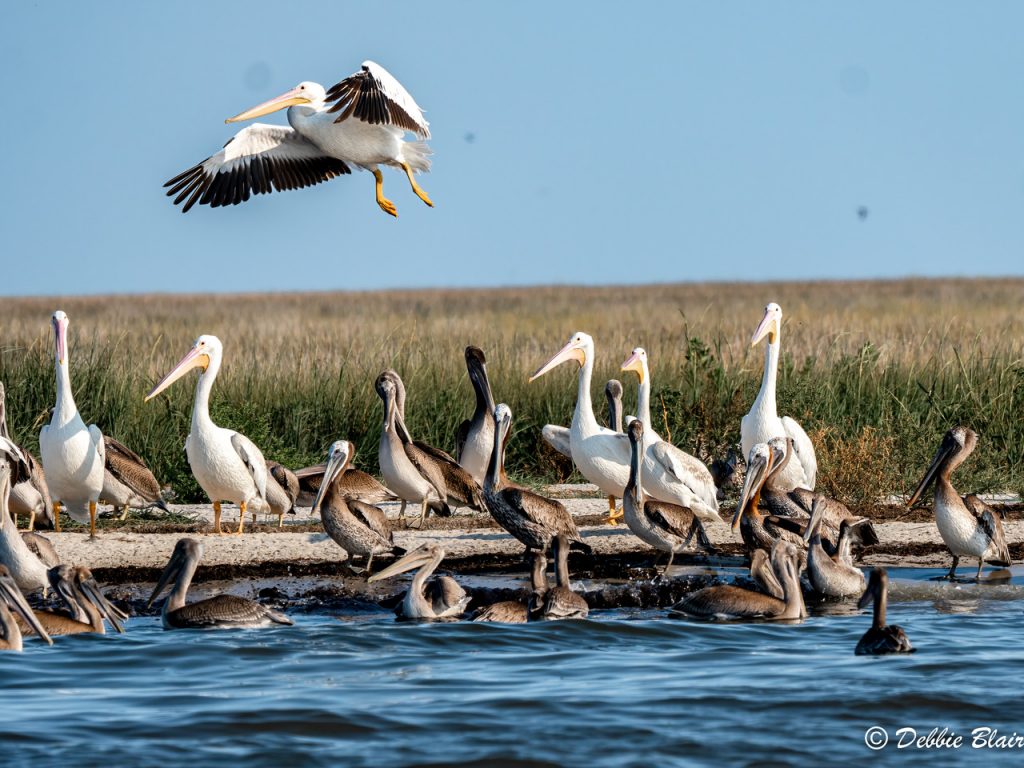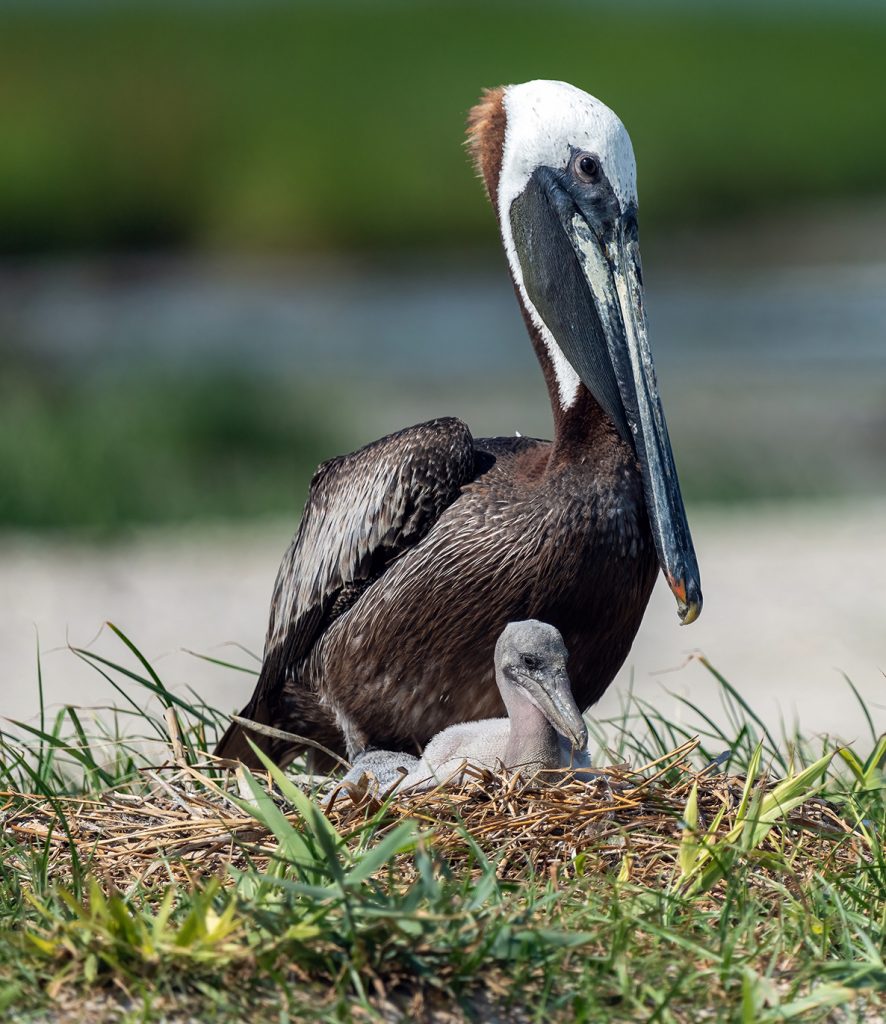General Info: Smith Island Pelican Tours

Our guests take the most amazing photos! Thanks to Debbie Blair, Deborah McFarlin and Lynn Kohler for sharing the above photos, and thanks to Adele Clagett for sharing the story of her experience with us on Thursday, August 11 on her wonderful website. Click here to enjoy Adele’s photos and a virtual tour of Smith Island!
Tour Details
- private transportation aboard the Captain Jason II, guests can leave personal items on boat
- small group skiff tours to view the Brown Pelican nesting colony, timed with the high tide.
- lunch at the world-famous Drum Point Market, includes crab cake sandwich, sides, drink, and slice of Smith Island cake
- professional bird guide
Read more about the experience below. Before you purchase your trip, please note the following:
- Trips are subject to weather cancellations. If we must cancel an event due to dangerous conditions, we will notify participants via email as soon as possible, and refunds will be issued within 15 days.
- We do not cancel trips for cold/hot temps or rain, and we strongly encourage our guests to dress and prepare for all weather.
- Please review our Waiver and Release of Liability. We require all registrants to complete the waiver and bring a signed copy with them.
Helpful Links:
- Click here for Smith Island Tours: Directions, Policies & Tips.
- Click here for Smith Island Tours: News & Recognition to learn more about these tours and watch videos about the experience.
- Click here for Smith Island Tours: On Your Own if you choose to arrange your own trip.
- Click here for Somerset County Tourism.
- Click here for Beaches, Bays & Waterways, the Beach to Bay Heritage Area.
Wildlife Photography Disclaimer
ATTENTION PHOTOGRAPHERS: Please be aware that our Smith Island Pelican Tours are primarily bird watching experiences. We welcome and value photographers on all of our bird watching trips, but our field trips are not photography workshops. Please read our disclaimer before purchasing your ticket — we want you to have a great experience!
Sample Itinerary
Please note: Departure from Crisfield may vary depending on the tide. Once we arrive at Smith Island, we time our small boat tours with the high tide so that we can access the pelican colony. The colony is located on a marsh island south of Smith Island surrounded by very shallow water. Some of our small boat tours will depart early morning and some will depart closer to noon.
- arrive in Crisfield, park vehicle at the Crisfield City Dock located near 1200 West Main Street, Crisfield, MD 21817
- load Captain Jason II (please note: there is no head/toilet on the boat, so please use a restroom before boarding if you can)
- depart Crisfield for Smith Island
- arrive in Village of Tylerton
- lunch at Drum Point Market
- load skiffs for tours of Brown Pelican nesting colony (all viewing and photography done from boat; we will not be walking through or disturbing the colony)
- return to Tylerton for restroom
- depart Tylerton for birding by boat around Smith Island and the Glenn L. Martin National Wildlife Refuge
- arrive in Village of Ewell for tour of Smith Island Cultural Center and an optional bird walk along the road between Ewell and Rhodes Point
- return to Crisfield, depart for home
Brown Pelicans in the Chesapeake Bay
Brown Pelican populations plummeted in the 1940s primarily due to the use of the pesticide DDT. The poison was ingested by pelicans eating contaminated fish, which caused the birds to lay eggs with shells so thin they broke during incubation. The Brown Pelican was listed as an endangered species in 1970, and DDT was banned in the United States in 1972. Following these protective measures, the Brown Pelican population began to recover and move further north. Pelicans started nesting in Maryland’s coastal bays in 1987. Today, hundreds of Brown Pelicans nest between Smith Island and Holland Island in the Chesapeake Bay, the furthest north these birds currently nest and raise young on the East Coast.
Brown Pelicans migrate to the Chesapeake in April to nest. After laying 2 – 4 eggs, the parents incubate them with the skin of their feet, essentially standing on the eggs for up to 35 days. Babies are naked and blind at hatching, and are completely dependent on their parents to feed them fish. The young develop soft, silky down as they grow, followed by feathers. Average age at first flight is 75 days.
Read more here from Chesapeake Bay magazine.

